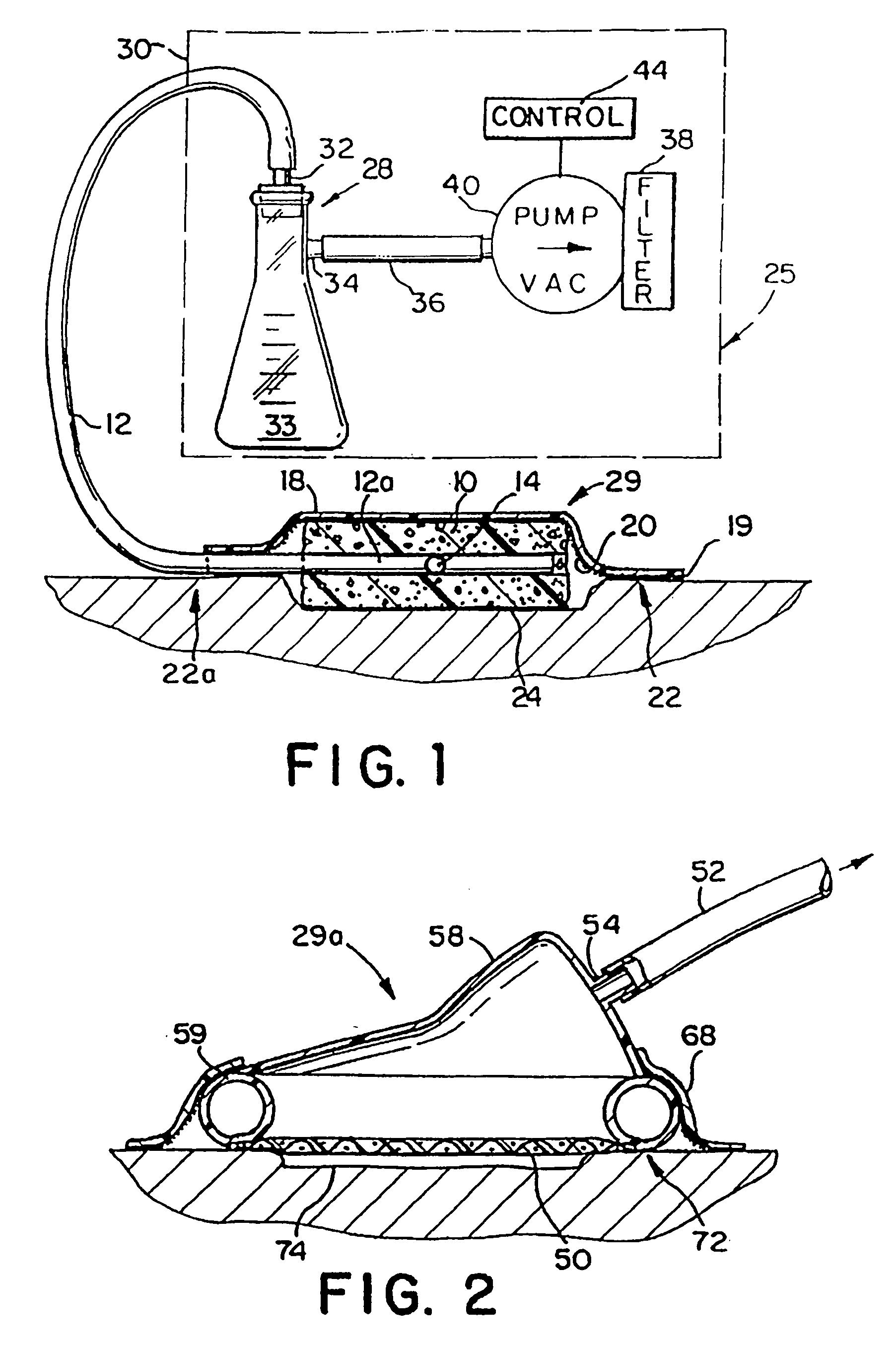Wound treatment employing reduced pressure
a technology of reduced pressure and wounds, applied in the field of wound treatment employing reduced pressure, can solve the problems of large or infected wounds, inability to spontaneously close, and inability to successfully fight bacterial infections, so as to promote epithelial migration, reduce pressure, and enhance the attachment of adjacent tissu
- Summary
- Abstract
- Description
- Claims
- Application Information
AI Technical Summary
Benefits of technology
Problems solved by technology
Method used
Image
Examples
example 1
Treatment of Open Wounds
[0054]In order to demonstrate the use of a negative pressure appliance in the treatment of open wounds, an animal study was conducted using pigs as subjects. Pigs are frequently used as subjects in wound healing studies since they have essentially the same skin and subcutaneous tissue structure as humans.
[0055]Five 15 kg Chester pigs were obtained and acclimated for 1 week prior to use. The animals were sedated with an intramuscular injection of ketamine (25 mg / kg):xylazine (2.5 mg / kg):acepromazine (5 mg / kg). The backs and sides of the animals were shaved and scrubbed for surgery. One percent halothane was administered by endotracheal tube for maintenance of anesthesia. Two circular wounds were created on the midline of the animals. The wounds were 2.5 cm in diameter having a depth reaching, but not including, the deep fascia over the spine (approximately 1 cm). Wounds in pigs in this site do not contract during healing. Alginate impressions were made of each...
example 2
Reduction of Infection
[0059]During the course of the experiment described as Example 1 above, it was observed that the reduced pressure-treated wounds were much cleaner and bled more spontaneously than non-treated wounds. It was therefore undertaken to determine the relative rates of clearance of a known bacterial inoculum from treated and non-treated wounds.
[0060]Five 15 kg pigs were obtained and wounds created as set forth in Example 1. Two 2.5 cm diameter defects were created on the dorsum of each pig using a sterile technique, with 7.5 cm interval retained between the edges of the defects. Hemostasis was obtained by electrocautery. Prior to placement of the reduced pressure appliances, 108 organisms of Staphylococcus aureus in 1 ml saline solution were injected into each wound. The reduced pressure appliances of the type shown in FIGS. 2 and 11 were then attached as in Example 1. A reduced pressure of 5 in. Hg below atmospheric pressure was applied to one of the wounds upon each...
example 3
Treatment of Burns
[0064]Use of reduced pressure appliances upon burns has been found to retard the progression of partial thickness burns into full thickness burns. A partial thickness burn is a burn in which the depth of cell death due to thermal trauma does not extend below the level of the deepest epidermal structures (i.e., the base of hair follicles, sweat glands, sebaceous glands, etc.). A burn that is initially a partial thickness burn will often deepen and progress into a full thickness burn due to insufficient blood circulation to the epidermal cells beneath the partial burn.
PUM
 Login to View More
Login to View More Abstract
Description
Claims
Application Information
 Login to View More
Login to View More - R&D
- Intellectual Property
- Life Sciences
- Materials
- Tech Scout
- Unparalleled Data Quality
- Higher Quality Content
- 60% Fewer Hallucinations
Browse by: Latest US Patents, China's latest patents, Technical Efficacy Thesaurus, Application Domain, Technology Topic, Popular Technical Reports.
© 2025 PatSnap. All rights reserved.Legal|Privacy policy|Modern Slavery Act Transparency Statement|Sitemap|About US| Contact US: help@patsnap.com



